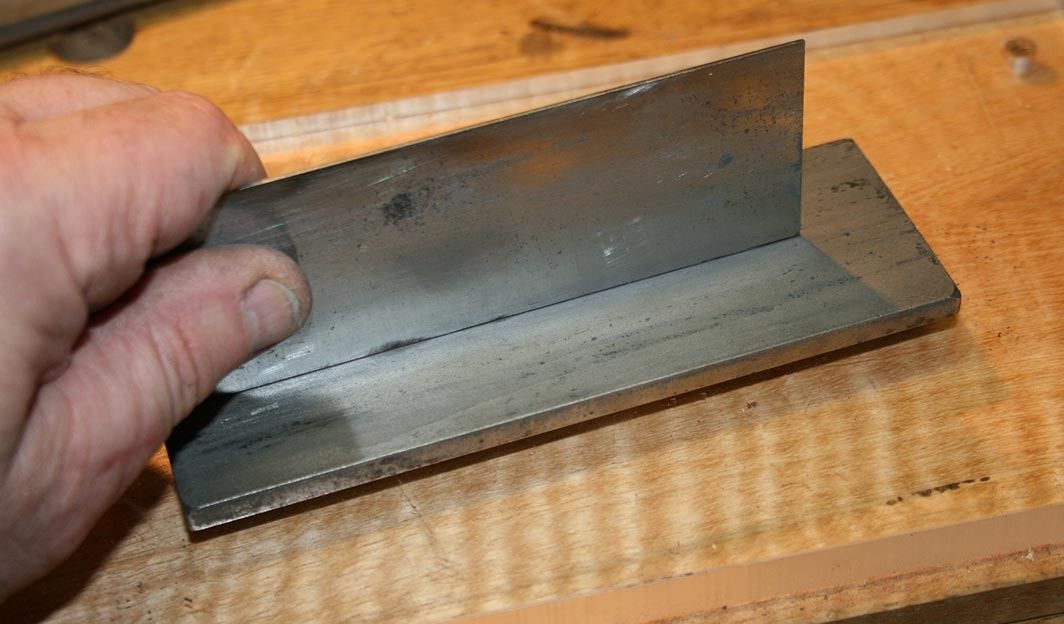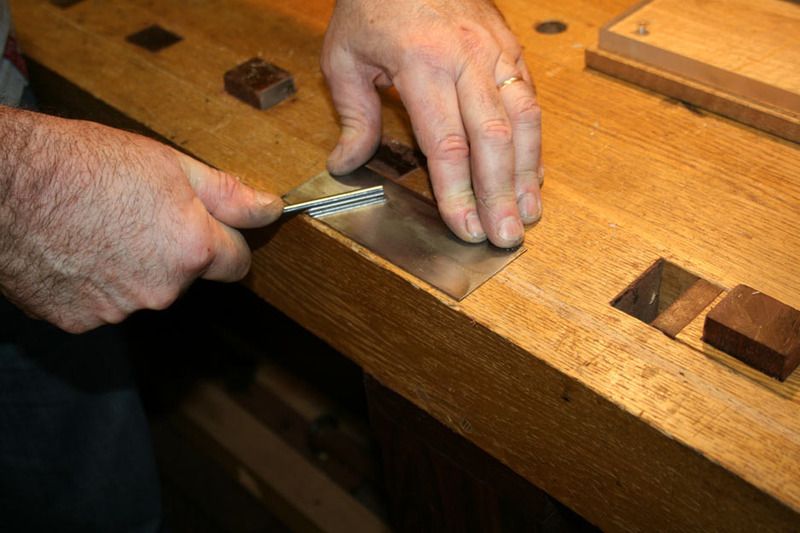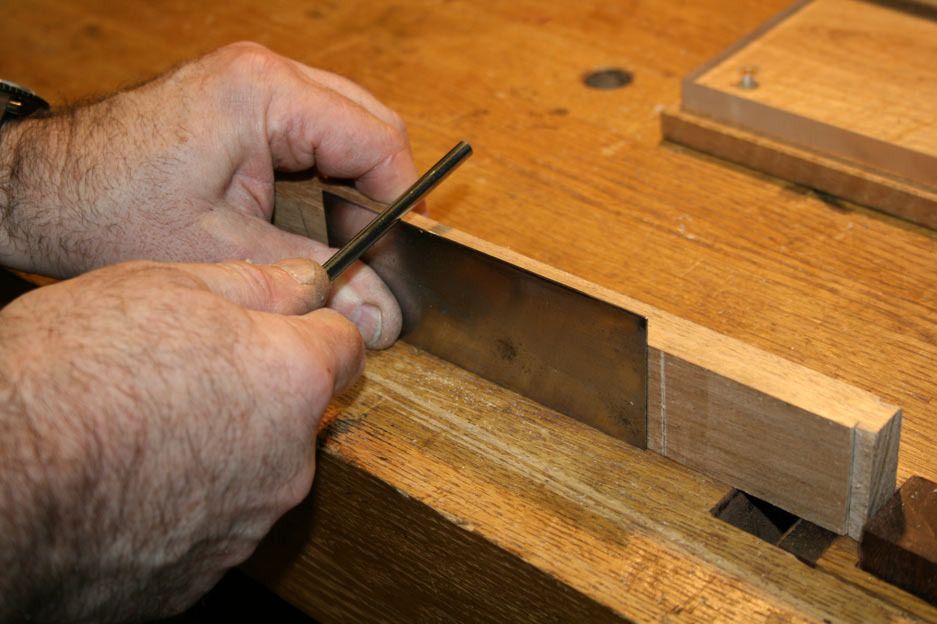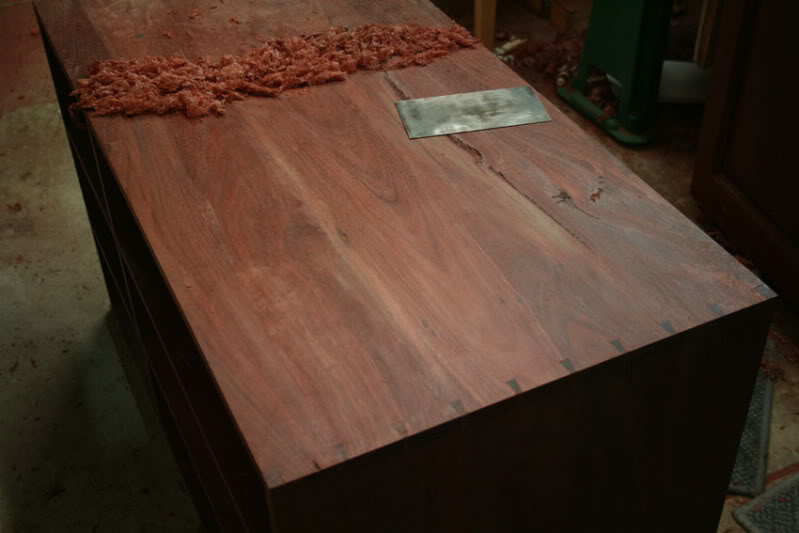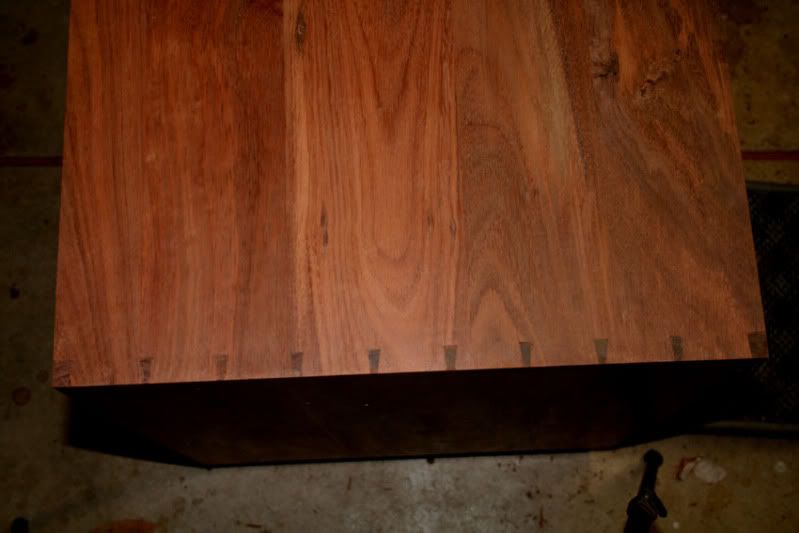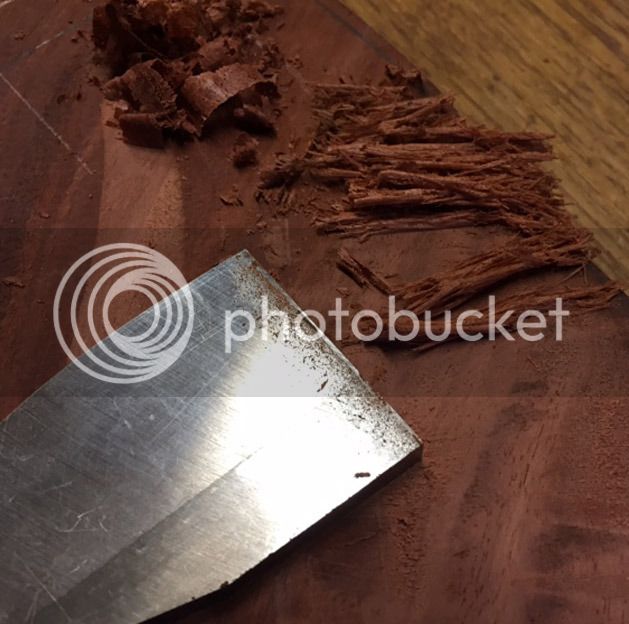Here is my easy jig for filing a scraper. It can be used to consistently file the edge of the card scraper very square. It is a very simple thing to make, for example with just those three strips of plywood and some screws.
I have used it quite a lot now, and it has been found to be a real user. It is a completely handheld thing, there is no real need to clamp it at all. During storing, it will hang at the file quite nicely.
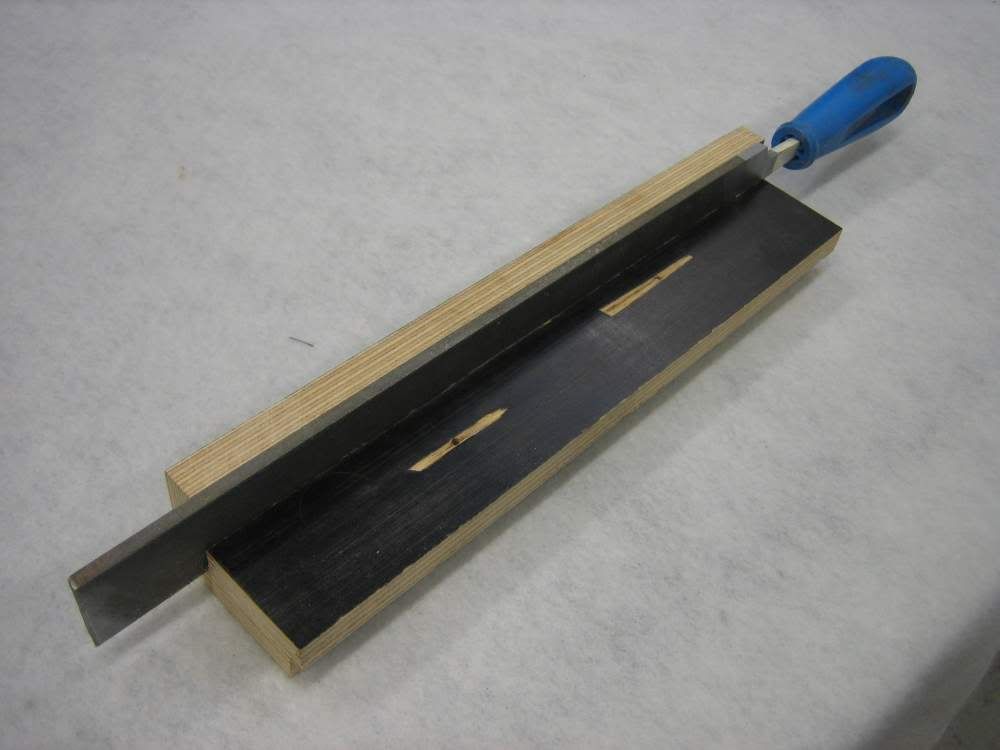
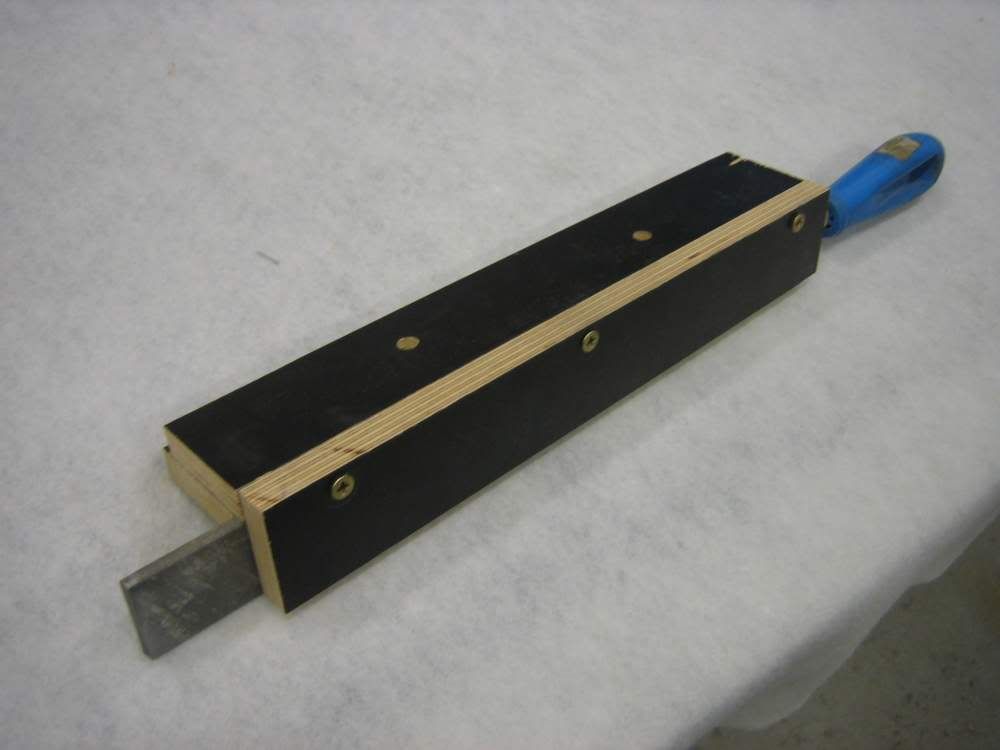
There is a single-cut metal file in use, ment to be pushed only. It is fitted there so that it does not much move during use. That can be done for example with a layer of paper or with other similar filler layer.
You can make the groove for the file quite deep, too. When the file wears and gets dull, just add some filler in the bottom of the groove to lift the file upwards, to expose a new line of sharp teeth.
The file is set so that when you push the scraper edge along the file, the tilted teeth of the file will draw and press the scraper against the "table" of the jig. Just remember to do pushes only.
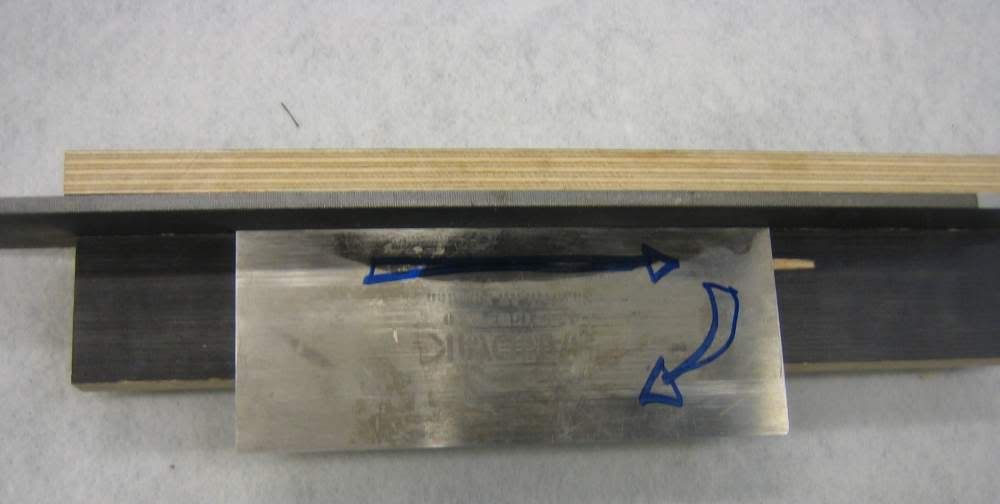
Consistently square edge will provide a good starting point for different burnishing angles.
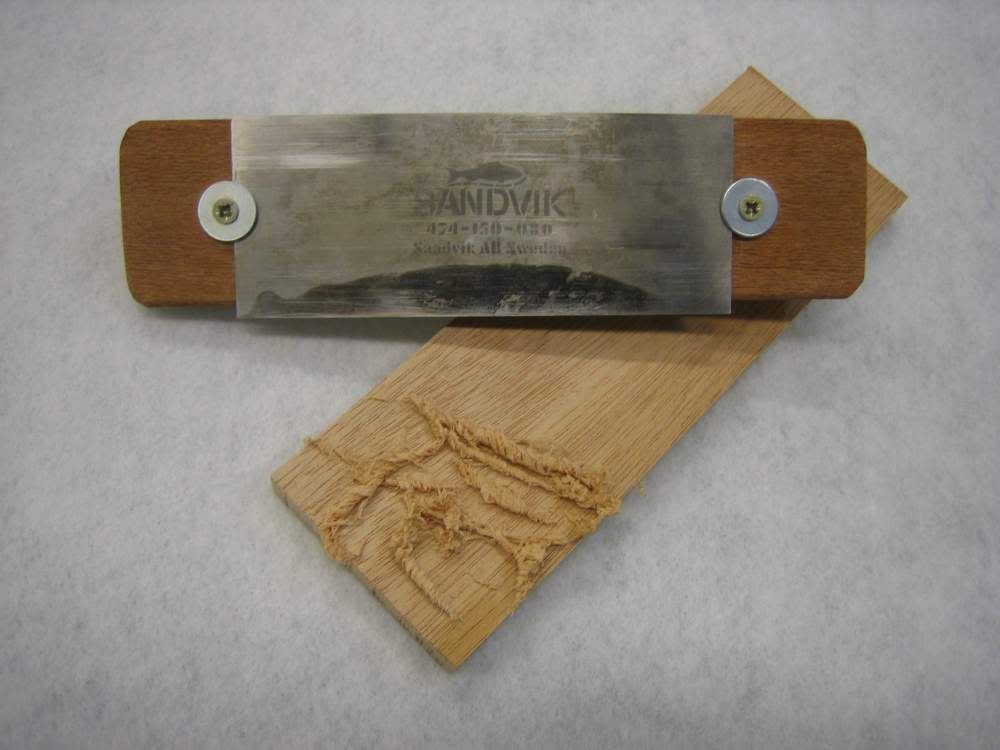
Here is a 0.05 mm thick shaving, a typical for a sapele mahogany (works like a butter with a scraper).
I did not compress the shaving during thickness measurement.
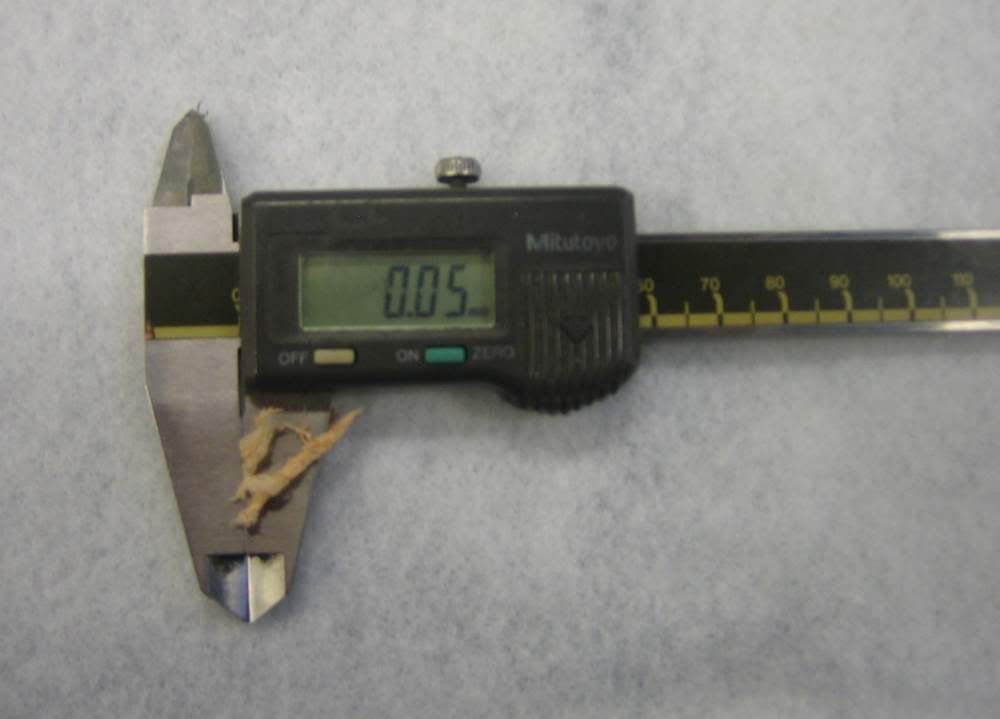
Samu
I have used it quite a lot now, and it has been found to be a real user. It is a completely handheld thing, there is no real need to clamp it at all. During storing, it will hang at the file quite nicely.


There is a single-cut metal file in use, ment to be pushed only. It is fitted there so that it does not much move during use. That can be done for example with a layer of paper or with other similar filler layer.
You can make the groove for the file quite deep, too. When the file wears and gets dull, just add some filler in the bottom of the groove to lift the file upwards, to expose a new line of sharp teeth.
The file is set so that when you push the scraper edge along the file, the tilted teeth of the file will draw and press the scraper against the "table" of the jig. Just remember to do pushes only.

Consistently square edge will provide a good starting point for different burnishing angles.

Here is a 0.05 mm thick shaving, a typical for a sapele mahogany (works like a butter with a scraper).
I did not compress the shaving during thickness measurement.

Samu





